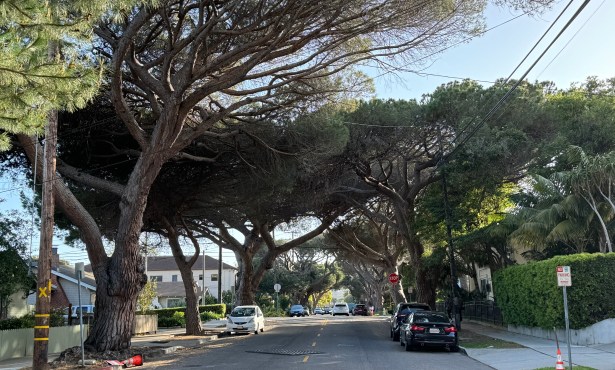Reclaiming Our Water
During a Drought, It's Time to Use Water Wisely

Here in Santa Barbara County, we have a problem: In the midst of one of the worst droughts ever recorded, we are throwing away billions of gallons of usable water every year.
I’m talking about reclaimed water: the stuff our high-tech treatment plants produce from our wastewater. Ours don’t get it clean enough to drink, but there’s an awful lot of uses for treated water, and every gallon replaces a gallon of precious fresh water. Regulations and expense make reuse of treated water challenging, but some cities are already hard at work on it. Goleta’s treatment plant, the largest in the county, recycles 25-30 percent of the treated water, piping it to UCSB and local golf courses for irrigation. But all the rest — at least 1.4 billion gallons a year — gets dumped into the Pacific. Other treatment plants in the county, like Summerland and Montecito, recycle none of their water, according to the county’s Waterwise website.
Up in Orcutt, the Laguna Sanitation District should be commended for reusing 100 percent of its treated water, mostly to irrigate pasture and farmland for cattle and crops. And as with most irrigation, some of the water filters its way through the earth to our groundwater basins. Santa Maria does this intentionally with recharge ponds. Cleaned by the earth, this water once again becomes fresh water, securely stored for reuse in our underground aquifers. Wastewater to fresh water: it’s a cycle that can go on and on. And it’s something we should be doing more of.
But as Orcutt continues to grow, the Laguna plant will produce more treated water, and apparently doesn’t know what to do with it. This is pretty clean water — tertiary treated and disinfected. But instead of finding other customers and uses for it, the district agreed to an offer from Santa Maria Energy (SME) to build a pipeline to pump treated water to its oil wells eight miles away. SME will use over 100 million gallons a year for steam injection at its 136-well project. That’s a good chunk of Laguna’s output, but that’s just for starters. SME is eying over 7,000 more well locations, and if they’re just as thirsty, that would require over 6 billion gallons more per year. That’s more than all North County treatment plants produce. And that’s just one company of many with plans for expansion.
So what happens after every gallon of reclaimed water is spoken for? They’ll use any freshwater they can get. The recently approved North Garey project, east of Santa Maria, will use millions of gallons a year drawn from Santa Maria’s already over-taxed groundwater basin. Meanwhile, out in the central valley, oil drilling and steam generation in 2009 sucked up 83 percent of the West Kern Water District’s allocation from the State Water Project — that lifeline of precious (and expensive) water from the north, built by taxpayers primarily for our cities and farmers.
Is oil really more valuable than water? In California, about 22 billion gallons of water per year is used for steam injection. Almost all of it is permanently polluted. Water pumped into oil fields comes back up contaminated with heavy metals, radioactive material, and volatile organic compounds, plus whatever chemicals the oil company adds to its wells, which are difficult or impossible to remove. This water can be reused in these oil operations a few times, but afterward, this increasingly concentrated toxic cocktail must be discarded in wastewater wells. Never again will it flow in our rivers, irrigate our fields, or flow through our taps. Nor will it recharge our critically important groundwater basins — on which towns like Lompoc, Los Alamos, Cuyama, and Orcutt are nearly 100 percent dependent.
It’s time to get smart. State law and common sense dictate that we need to start using our treated water more wisely — not pumping it out to sea, nor committing it to oil companies to permanently pollute.
Think we should be more careful with our water? Vote yes on Measure P, the Healthy Air & Water Initiative this November. This reasonable initiative would allow oil companies to continue conventional oil drilling, while banning risky extraction methods like fracking and steam injection that consume forever so much of the water we sorely need now — and will need even more in the future.



